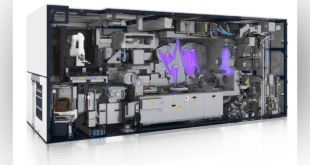Recent Breakthroughs
Impact on Military Communications
Accurate timing is the lifeblood of modern military communications. For example, compact atomic clocks based on quantum technologies are being developed for use in space, ensuring that satellite communication systems remain resilient even if centralized network time references are disrupted. Enhanced atomic clocks ensure that communication satellites, ground stations, and mobile networks remain perfectly synchronized, which is essential for maximizing bandwidth and minimizing signal interference. Improved synchronization reduces latency in data transmission, enabling real-time communication that is vital during critical operations. Such capabilities are pivotal for maintaining the reliability of systems that require synchronized operations across distributed networks.
Enhanced timing precision also plays a critical role in ensuring robust and reliable communications across military networks, especially for satellite-based systems. Precise clock synchronization among satellites increases the effective bandwidth and efficiency of data processing and transmission, which is essential for real-time command and control, secure communications, and coordinated maneuvers in contested environments. As quantum communication technology continues to mature over the next few decades, the integration of advanced atomic clocks and quantum sensors will be key to maintaining a strategic edge in defense, ensuring that critical systems remain both secure and highly efficient.
Advancements in Electronic Warfare
Beyond communications, quantum-enhanced timing has profound implications for electronic warfare. EW systems rely on the precise measurement and timing of electromagnetic signals to intercept, jam, or decrypt enemy transmissions. Quantum technologies allow for faster, more accurate detection of transient signals across a broad frequency spectrum, improving the ability to counter sophisticated threats.
For instance, in electronic warfare scenarios, where intercepting and decoding enemy signals is crucial, even minor improvements in time precision can translate into more effective signal detection and processing. With quantum-enhanced clocks, military communication systems can achieve robust performance, even in contested or GPS-denied environments.
The U.S. Air Force Scientific Advisory Board has underscored the importance of further investment in quantum clocks and quantum sensors, emphasizing that enhanced timing precision is crucial for optimizing complex military operations. This precision is not just about accurate timekeeping; it is integral to the effectiveness of operations such as Signals Intelligence (SIGINT), countering deceptive radar techniques (counter-DRFM), and electronic warfare (EW). In these domains, even a nanosecond discrepancy can lead to significant performance degradation, potentially compromising mission success and strategic advantage.
Additionally, by integrating quantum sensors with advanced atomic clocks, EW platforms can operate with greater resilience against jamming and spoofing, thereby securing critical military operations. Enhanced timing precision also enables better coordination among multiple EW assets, creating a more cohesive and responsive defense network.
As noted by researchers like Christopher Foot from Oxford University, quantum clocks can significantly improve the synchronization of electronic communications and navigation systems, which is vital for modern military operations. Such advancements also extend to quantum sensors used in navigation and EW, where the precise timing of signal detection can be the difference between intercepting a threat and missing it entirely
Future Implications and Additional Developments
The potential applications of portable cold-atom sources extend far beyond timekeeping. In defense, these technologies can provide critical support for electronic warfare by enhancing the precision of quantum sensors and navigation systems. For instance, quantum magnetometers and inertial sensors, which are not susceptible to jamming, could be integrated with portable atomic clocks to maintain accurate positioning and secure communications even under adverse conditions. Furthermore, recent advancements in quantum-logic clocks—such as the entangled aluminium-ion clocks developed at NIST—demonstrate how quantum entanglement can push the limits of accuracy even further, offering prospects for redefining the second.
As research continues to mature, the convergence of these quantum technologies promises to usher in a new era of resilient, high-performance defense and communication systems. With ongoing investments in quantum research by governments worldwide, the evolution of portable cold-atom sources and other quantum sensors will play a pivotal role in creating systems that are not only more precise but also more adaptable to the complex demands of modern military operations and civilian applications alike
Conclusion
The integration of quantum effects into atomic clocks represents a significant leap forward in military technology. These advancements not only improve the accuracy and stability of timekeeping but also enhance military communications and electronic warfare capabilities. As quantum-enhanced atomic clocks become more compact and robust, they will play a pivotal role in ensuring that military networks remain synchronized, secure, and capable of operating effectively even under challenging conditions. With continued investment in quantum research, the future of defense technology promises even greater precision and resilience, reshaping how modern warfare is conducted.
References and Resources also include:
https://www.insidescience.org/news/quantum-way-synchronize-atomic-clocks
https://www.sciencedaily.com/releases/2021/06/210621133906.htm
 International Defense Security & Technology Your trusted Source for News, Research and Analysis
International Defense Security & Technology Your trusted Source for News, Research and Analysis


